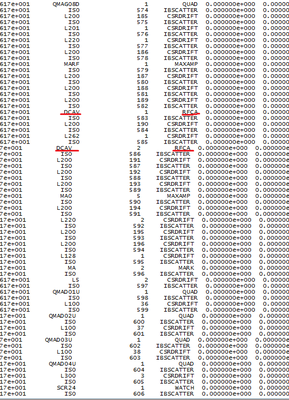Moderators: cyao, michael_borland
-
Olga Konstantinova
- Posts: 5
- Joined: 23 Aug 2013, 03:50
Post
by Olga Konstantinova » 11 Dec 2013, 23:47
Dear Michael,
I am calculating emittance growth rates for compact-Energy-Recovery-Linac. I found the following remark concerning IBSCATTER routine:
Because the IBS growth rates are energy dependent, special caution is needed for calculations with accelerating beam. The user needs to split their accelerating cavity into several pieces, so that $\gamma$ has no large changes between elements.
In my case IBS elements are inserted as in attached picture and the energy change during the dump is also as in attached picture. (RF VOLT=8314400, RF length=1.05 meter).
Can I suggest it like "No large changes between elements" or I should split?
Sincerely yours,
Olga.
-
Attachments
-
- RFcav.pdf
- (89.34 KiB) Downloaded 783 times
-

-
xiaoam
- Posts: 17
- Joined: 12 Jun 2008, 09:27
Post
by xiaoam » 20 Dec 2013, 12:22
Olga,
I would say energy variation between each IBS element should be smaller than 5% of the beam energy for low energy beam.
In my previous simulation, initial beam energy is 10MeV, I split rf cavity, so each piece of rf cavity gave 200 kV energy to beam. For even low energy, you need smaller step size. It also depends on your bunch charge and beam emittance, so it's hard to say what will be the correct number. Vary the energy step size to see if you get result converged.
aimin
-
simone.dimitri
- Posts: 46
- Joined: 09 Jun 2008, 01:19
Post
by simone.dimitri » 26 Jul 2016, 09:05
Dear Michael and all,
I am using IBSCATTER for a high brightness beam at the fixed energy of 130 MeV, and the beam is recirculating one or few turns into a small ring with no RF elements.
I wonder whether I shall use ISRING=1 or ISRING=0.
For my better understanding: does that option take into account the synchronous motion of particles inside the bunch? And if so, shall I use it only when an RF element is included in a ring, or even without that?
Thank you in advance,
Simone